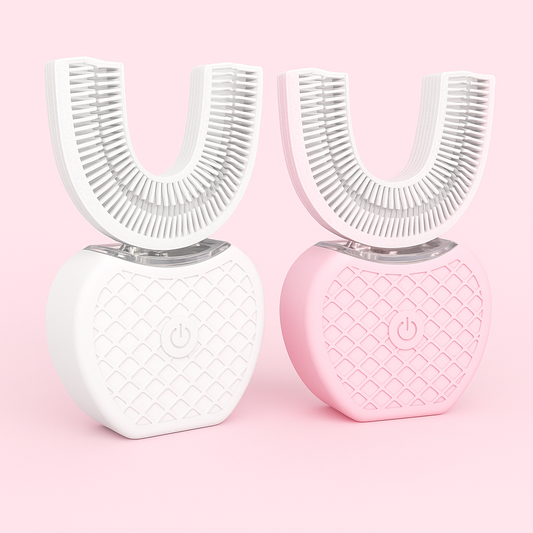Introduction: A New Era for Whitening Toothpaste
Consumers today want more than a brighter smile—they want oral care that supports long-term health. The search for a good whitening toothpaste increasingly includes people looking for gentle, scientifically-minded formulas. Two ingredients rising in popularity are niacinamide and xylitol, especially in fluoride-free blends that prioritize tissue health and microbiome balance while delivering visible whitening over time.
Why This Guide Matters
- Understand how niacinamide and xylitol work in toothpaste formulations.
- Learn whether a toothpaste without fluoride is right for you.
- Get practical buying and usage guidance for the best toothpaste for whiter teeth.
What Causes Tooth Discoloration?
Before choosing a toothpaste whitening best suited to your needs, it helps to know why teeth darken. Stains are generally classified as:
- Extrinsic stains: Surface discoloration from coffee, tea, red wine, tobacco, and pigmented foods. These respond best to whitening toothpastes and professional cleaning.
- Intrinsic stains: Deeper discoloration from enamel thinning, aging, medications, trauma, or fluorosis—often requiring professional treatments like bleaching or restorations.
Effective whitening toothpaste targets extrinsic stains and helps create an oral environment that reduces future staining.
How Whitening Toothpaste Works: Mechanics and Chemistry
- Mechanical action: Mild abrasives remove surface stains; look for products with controlled abrasivity (low-to-moderate RDA).
- Chemical action: Enzymes, polyphosphates, or certain surface-altering compounds reduce stain adhesion and change light reflection for a brighter look.
- Biological action: Ingredients like xylitol and niacinamide work by modifying bacterial activity and tissue health, which indirectly support stain control and a cleaner surface.
Niacinamide Toothpaste: What It Is and Why It Helps
Niacinamide (vitamin B3) is widely used in skincare for its anti-inflammatory and barrier-supporting properties. In oral care, its value comes from similar biological effects:
- Supports gum health: Niacinamide can help reduce localized inflammation and support mucosal resilience, improving overall oral tissue condition.
- Promotes a balanced environment: Healthier gums and mucosa mean less plaque accumulation and fewer niches where stains form and persist.
- Gentle approach to whitening: Because it’s not an abrasive whitening agent, niacinamide can be paired with low-abrasion formulas to protect enamel while improving cosmetic appearance.
Note: While niacinamide contributes to a healthier mouth, it should not be presented as a direct substitute for professional peroxide-based bleaching when rapid, dramatic whitening is desired. Instead, niacinamide is part of a long-term strategy for healthier, better-looking teeth.
Xylitol: The Evidence-Backed Sweet Ally
Xylitol is a sugar alcohol with a strong track record in dental research:
- Reduces harmful bacteria: Xylitol interferes with Streptococcus mutans metabolism, lowering acid production and reducing decay risk.
- Supports remineralization: By helping maintain a neutral pH and lowering bacterial acid attacks, xylitol aids the natural remineralization of enamel.
- Enhances compliance: Its pleasant taste improves toothpaste palatability without feeding bacteria the way sugar does.
When searching for a product, keywords like toothpaste with xylitol or toothpaste that whitens teeth should point you to formulations that support both whitening and oral health.
Fluoride-Free Toothpaste: Pros, Cons, and Who Should Consider It
Fluoride is a cornerstone of cavity prevention. Replacing it requires thoughtful alternatives and a clear rationale:
- Pros of fluoride-free formulas:
- Suitable for those avoiding fluoride for personal or specific medical reasons.
- Allows focus on other actives like niacinamide and xylitol to promote tissue health and microbial balance.
- Cons and cautions:
- For individuals at high risk of decay (history of cavities, dry mouth, orthodontic appliances, or high-sugar diets), fluoride-free may reduce protective effects unless other preventive measures are used.
- Some fluoride-free whitening products compensate with abrasives that, if overused, can damage enamel.
Bottom line: If you choose toothpaste without fluoride or are searching for fluoride toothpaste free options, talk to your dentist to ensure your preventive plan includes appropriate alternatives like topical professional treatments, sealants, or behavior changes.
Synergy: Why Niacinamide + Xylitol Make Sense in Fluoride-Free Whitening Toothpaste
- Microbiome modulation: Xylitol reduces cariogenic bacteria and acid production while niacinamide supports healthier mucosal and gingival tissue—together they reduce plaque adherence and staining niches.
- Gentle whitening strategy: This combination allows formulators to rely less on harsh abrasives, preserving enamel and producing gradual, sustainable brightening.
- Overall oral health focus: Instead of aggressive bleaching that targets color only, these formulas aim to enhance the environment that prevents stains and disease long-term.
How to Choose the Best Toothpaste Whitening Product
When comparing products, look beyond branding and focus on formulation details.
- Check active ingredients: Prefer products that list niacinamide and xylitol for tissue and microbial benefits.
- Look for abrasion info: Seek low-to-moderate RDA values to protect enamel—ask brands if RDA isn’t listed.
- Review clinical support: Brands that publish clinical data or third-party testing are more trustworthy. Search terms like toothpaste whitening best or best toothpaste for whiter teeth often surface these validated options.
- Watch for fluoride labeling: If you want toothpaste without fluoride, confirm the label reads "fluoride-free" or "no fluoride"; otherwise, many whitening pastes still include fluoride for decay protection.
- Consider additional actives: Ingredients like polyphosphates, papain, or gentle enzymes can enhance stain removal without increasing abrasivity.
- Try recommended sellers: For curated selections, consider retailers offering transparent ingredient sourcing and formulation notes—search for "toothpaste with xylitol" options from reputable sellers like toothpaste with xylitol.
How to Use Whitening Toothpaste Effectively and Safely
- Brush twice a day for two minutes with a soft-bristled brush and gentle circular strokes to reduce enamel abrasion and gum recession.
- Use a pea-sized amount for adults; supervise children and use age-appropriate amounts per pediatric advice—many formulations have child-specific versions.
- Avoid excessive polishing: Reserve any high-abrasion products for occasional use only; daily toothpaste should be low-abrasion and focused on maintenance.
- Combine with good habits: Floss daily, limit staining foods and beverages, use a straw for dark drinks, and rinse with water after consuming staining foods.
- Consider adjuncts: Professional cleanings, in-office or dentist-supervised whitening, and remineralizing products can complement toothpaste efforts for faster results.
- Monitor for sensitivity: If sensitivity or irritation occurs, reduce frequency or stop usage and consult your dental professional.
Reading Labels: What to Watch For
- Actives listed first: If niacinamide and xylitol are meaningful components, they should be listed among the top ingredients.
- Absence of fluoride: Look for explicit statements if you require toothpaste without fluoride.
- RDA or abrasivity statements: Some brands provide Relative Dentin Abrasivity (RDA) values; lower is gentler on enamel.
- Claims and evidence: Terms like "clinically proven" should be supported—check for links to studies or certifications.
- Unwanted additives: If you prefer minimal formulas, avoid unnecessary harsh detergents or overly strong bleaching agents that may cause sensitivity.
Realistic Expectations: What Whitening Toothpaste Can and Can’t Do
- Can: Reduce extrinsic stains, create a cleaner surface less prone to staining, improve perception of whiteness over weeks to months when used consistently.
- Can’t: Replace professional bleaching for intrinsic stains or provide dramatic instant whitening like in-office peroxide treatments.
- Will help: Reduce plaque accumulation and improve gum health when ingredients like xylitol and niacinamide are present.
Practical Routines and Sample Regimens
Example daily routine for gradual whitening and oral health:
- Morning: Brush with a fluoride-free niacinamide + xylitol toothpaste if you’ve chosen a fluoride-free path, or a fluoride-containing whitening toothpaste if decay risk is a concern. Rinse and floss.
- After meals: Rinse with water and limit snacking on staining foods. Use a straw for dark beverages.
- Evening: Brush with your chosen whitening toothpaste, floss, and consider a xylitol-containing mouth rinse or chewing gum (xylitol gum) to maintain pH overnight.
- Every 6–12 months: Professional cleaning and dental checkups to remove stubborn stains and assess enamel health.
Safety, Side Effects, and Special Populations
- Children: Use child-safe amounts and formulations. Fluoride recommendations for children vary—consult your pediatric dentist before switching to a fluoride-free formula for kids.
- Pregnancy and nursing: Most topical oral products with niacinamide or xylitol are generally considered safe, but ask your healthcare provider for peace of mind.
- Allergies and sensitivities: Niacinamide is typically well tolerated; discontinue use and consult a dentist if you experience irritation.
- Systemic interactions: Topical toothpaste use is unlikely to cause systemic issues. Niacinamide oral ingestion in large doses can have effects, but toothpaste exposure is minimal.
Common Myths and Misconceptions
- "Toothpaste that whitens teeth will bleach enamel instantly" — False. Most whitening toothpastes remove surface stains gradually; dramatic whitening typically requires professional bleaching.
- "Fluoride-free is always better" — Not necessarily. Fluoride is highly effective at preventing cavities; removing it should be a reasoned decision with dental input.
- "Natural paste equals safe" — Some natural abrasives can be harsh. Check abrasivity and ingredient transparency regardless of "natural" claims.
- "Toothpaste zit treatments work" — Do not use toothpaste on skin blemishes; many ingredients in toothpaste can irritate skin and aren’t dermatologically formulated.
SEO-Friendly Buying Tips: What to Search For
- Use targeted queries: "best toothpaste for whiter teeth," "toothpaste with xylitol," "toothpaste without fluoride," and "niacinamide toothpaste" to surface specialized options.
- Read reviews and look for clinical backing or third-party testing to separate marketing from substance.
- Compare ingredient lists rather than just brand claims—prioritize low abrasivity plus beneficial actives like niacinamide and xylitol.
- Consider retailers that clearly label sponsored or specialty products—for example, curated selections of whitening and health-focused toothpastes are available at best toothpaste for whiter teeth.
Frequently Asked Questions (Expanded)
- How quickly will I notice results? — With consistent twice-daily use, expect visible improvements in 4–8 weeks for surface stains; deeper intrinsic discoloration will need professional care.
- Can niacinamide toothpaste cause a reaction? — Rarely. If you notice irritation, discontinue use and consult your dentist. Patch testing is generally unnecessary for toothpaste, but be mindful if you have known sensitivities.
- Is xylitol safe for pets? — No. Xylitol is toxic to dogs—keep all xylitol-containing products well out of reach of pets.
- Should I alternate fluoride and fluoride-free products? — Some people use fluoride toothpaste most days and a fluoride-free formula intermittently for specific benefits. Discuss with your dentist before adopting mixed approaches.
Case Studies and Anecdotes (What Users Report)
Many users switching to niacinamide + xylitol fluoride-free toothpastes report:
- Reduced gum inflammation and bleeding within a few weeks.
- Gradual lightening of coffee and tea stains with less reliance on abrasive scrubbing.
- Fewer cavities only if overall preventive measures (diet, professional care) are maintained—underscoring that fluoride-free choices require broader preventive attention.
Product Sourcing and Trusted Retailers
When shopping for top-rated whitening toothpastes and specialized formulas, look for vendors that list ingredient sources, manufacturing practices, and third-party testing. For a convenient curated selection of formulas that pair whitening goals with oral-health-first ingredients, explore options such as toothpaste without fluoride and other targeted products on Havana Body.
Final Thoughts: Balancing Whitening and Health
Niacinamide and xylitol together represent a thoughtful shift in how whitening toothpaste can be formulated: less about aggressive bleaching and more about promoting a mouth environment that resists stains and supports health. For many people seeking a toothpaste that whitens teeth while protecting oral tissues, these ingredients in fluoride-free or fluoride-containing contexts offer an attractive middle path.
Call to Action: Try Health-Focused Whitening Products
If you’re ready to explore thoughtfully formulated options—whether you search for the toothpaste whitening best suited to your needs or a targeted toothpaste with xylitol—consider checking curated selections at Havana Body. Find formulations that balance cosmetic brightening with long-term oral health at best toothpaste for whiter teeth and discover products designed to support healthier, whiter smiles.
Always consult your dentist for personalized advice, especially if you have a history of tooth decay, sensitive teeth, or gum disease. Making an informed choice—paired with consistent oral hygiene and professional care—will give you the safest path to a brighter, healthier smile.


